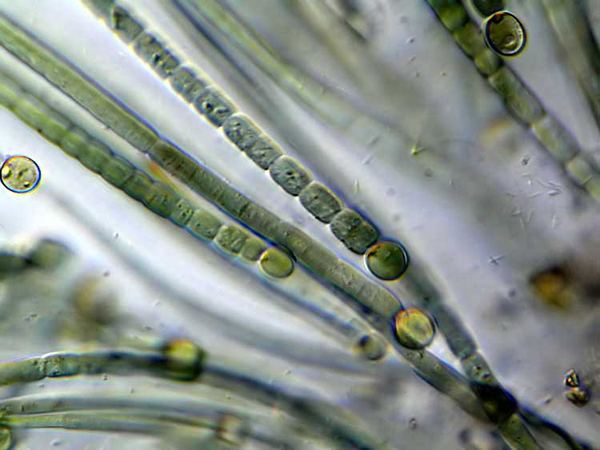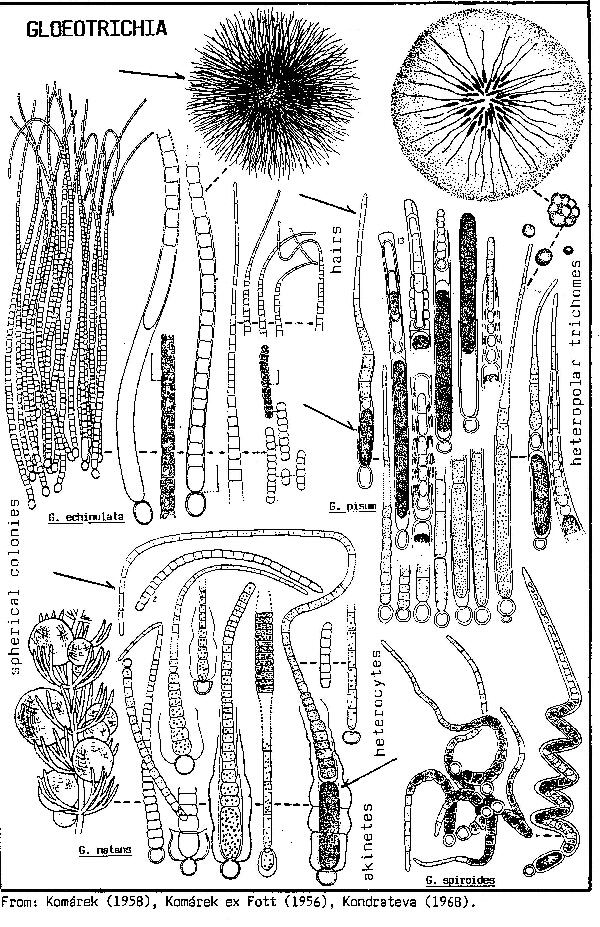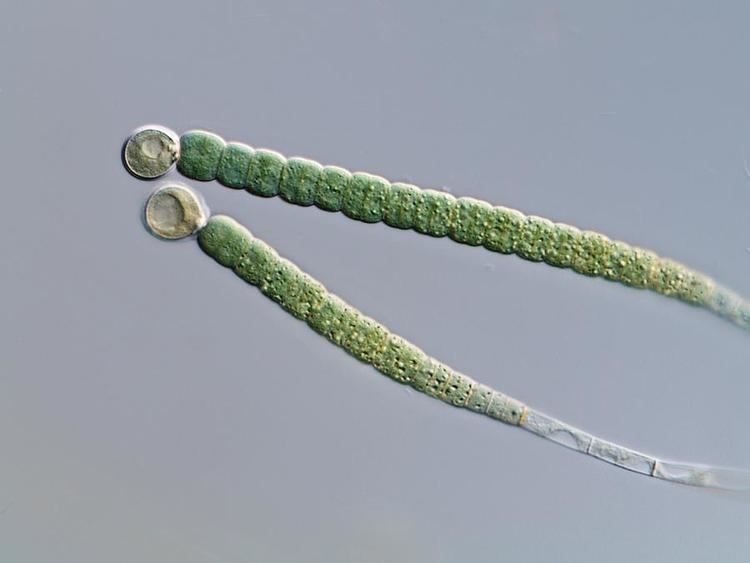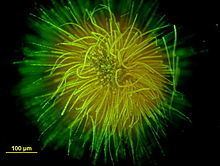Kingdom Bacteria Class Cyanophyceae Rank Genus Order Nostocales | Subkingdom Eubacteria Family Gloeotrichiaceae Phylum Cyanobacteria | |
 | ||
Similar Rivularia, Rivulariaceae, Nostocales, Tolypothrix, Calothrix | ||
Gloeoitrichia is a member of Cyanobacteria, belongs to the Order Nostocales; Family Nostocaceae. The total number of species currently accepted by the taxonomists. Gloeoitrichia; The name actually derived from its appearance of filamentous body with mucilage matrix.
Contents

Morphology

Spherical colonies of radiating straight trichomes (filaments without sheaths). Each trichome has an akinete as the basal cell near the center of the colony. Akinetes if present are adjacent the heterocyst. The primary morphology is trichomous (filamentous without sheaths), the secondary is colonial. The mucilagenous sheath is top short at the apex. Heterocysts are usually spherical in appearance. Trichomes are tapered at the apical region. Vegetetive cells are shorter and barrel shaped. The sheaths are firmly attached at the basal region. Sex organs are absent.
Similar genera

Rivularia is reported to form a morphologically similar colony when they are attached with the substratum and reported to radiating, tapered filaments with basal heterocysts.
Habitat

Freshwater Cyanobacteria. In North America Gloeoitrichia appears unexpectedly in many remote oligotrophic lakes during late summer and fall. It is also reported from several remote and pristine lakes in the undisturbed boreal forest watershed.Recently Gloeoitrichia was also found in 26 of 27 ‘low nutrient’ lakes in New England USA (Carey et al. 2012).

Likely the colonies develop in the bottom waters where sediment mineralization releases a portion of its phosphate, then adjust their buoyancy with displacement of bacterioplasm by elongating gas vesicles and rise to the surface where they can be distributed horizontally by wind-driven water currents. Blooms form in mid to late summer due to this ‘recruitment’ from the sediments, as the benthic colonies rise relatively in synchrony, measured in inverted funnel traps at up to 104 colonies m-2 day-1 in Lake Sunapee, NH USA (Carey et al. 2014).

Evidence that Gloeoitrichia is meroplanktonic, spending part or most of the year in sediments, comes from mesocosm growth experiments at Lake Erken. While open-water (pelagic) colonies were increasing during July 2000 – 2001, colonies in mesocosms (41 L and 300 L volume) were decreasing, even with additions of various combinations of nutrients (exception: addition of N, P and Fe) (Karlsson-Elfgren et al. 2005). The conclusion is that P-rich sediments enable colony growth and that increasing colony buoyancy during July brings them into the pelagic zone

Gloeoitrichia is also reported from some remote nutrient rich lakes surrounded by paddy field in West Bengal of India. Though this newly found paper which states about the presence of them in Bengal is not widely verified.
Toxins
Being a Cyanobacteria Gloeoitrichia is reported to produce some toxins. Microcystin LR was found in Gloeotrichia echinulata from Lake Sunapee, NH USA (Carey et al. 2007).
